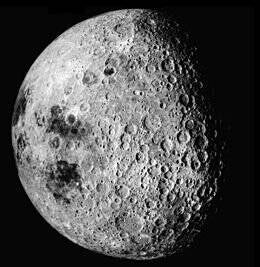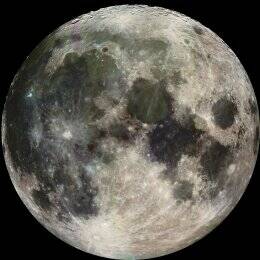Trip to the Moon
The Moon is Earth's only natural satellite. The Moon orbits Earth at an average distance of 384,402 km (238,856 mi), or 1.28 light-seconds. Its gravitational influence produces Earth's tides and slightly lengthens Earth's day. The Moon is of rocky silicate composition, has a surface gravity of 0.1654 g, about one-sixth of Earth's, and lacks a significant atmosphere, hydrosphere or magnetic field.
The Moon's orbit around Earth has a sidereal period of 27.3 days, and a synodic period of 29.5 days. The synodic period drives its lunar phases, which form the basis for the months of a lunar calendar. The Moon is tidally locked to Earth, which means that the length of a full rotation of the Moon on its own axis (a lunar day) is the same as the synodic period, resulting in its same side (the near side) always facing Earth. That said, 59% of the total lunar surface can be seen from Earth through shifts in perspective (its libration). Source: Wikipedia.
Map




Examples of what you can find in YouTube:
Future trips
Space Travel To Moon:See How SpaceX Will Send The First Tourist To Moon In 2023
How We Are Going to the Moon - 4K (2019)
NASA’s 2024 Artemis Moon Landing Mission Explained (2019(
Trips in the past
Apollo Moon Landing - AUTHENTIC FOOTAGE (2009)
A Trip to the Moon - 1957 (2014)
Inside NASA's Last Moon Mission (2016)
Learn about the moon
NASA | Tour of the Moon (2012)
Moon Landing VR Experience! Join the Apollo 11 mission to the Moon With Education in 360! (2019)
What Did We Learn From The Moon? | Secrets Of The Universe (2019)
Disclaimer: all videos play within Google YouTube®. All rights reserved by its creators.